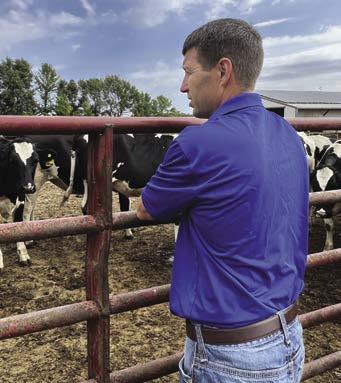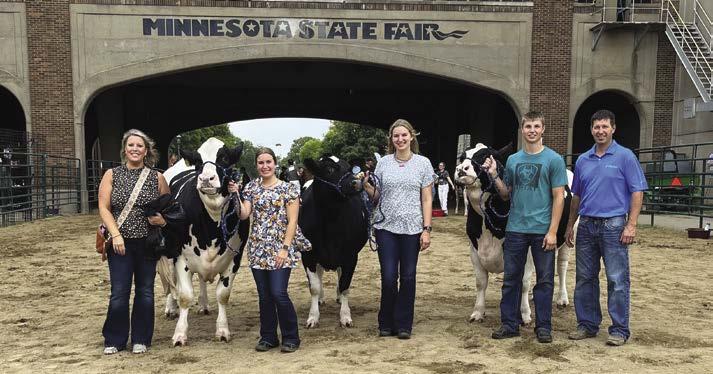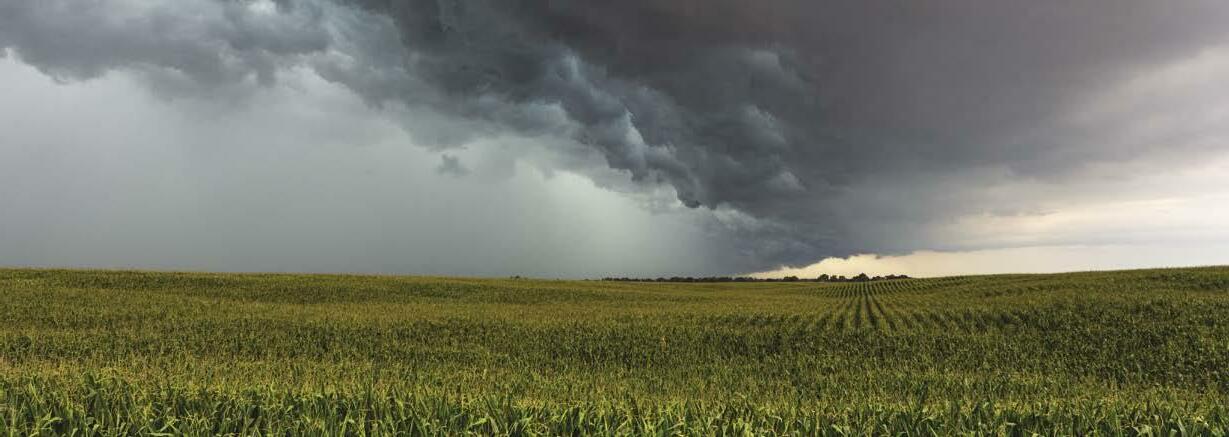
10 minute read
2023 Crop Insurance
2023 CROP INSURANCE: REVISIT YOUR RISK
Crop insurance is all about mitigating risk — but these days, the policies themselves can make things sweaty inside your comfort zone. Over the last few years, crop insurance choices and options have become more complex, and in 2022, costs continued to increase. As of right now, 2023 looks like it will present similar challenges.
A lot can change before the end of February, and one could be tempted to wait it out. However, we encourage farmers to start thinking about insurance coverage for the 2023 crop year now to have a better position going into the coming season.
WHERE TO START?
The first thing to do is define your risk. This will look different for everyone, and it's likely changed since the last time you visited these numbers. So, really sit down and list out your numbers for everything.
“Establishing your breakevens is going to get you to a solid starting point,” said Jason Gama, state insurance product officer at Compeer Financial. “Your cost of production is going to include everything — feed, fertilizer, land, operating costs. And those things have all likely changed since the last time you evaluated your operation. Now is as good a time as any to reestablish those figures after so much has changed in the markets.” Tools like Compeer’s Grain Margin Manager can provide a snapshot of all the pieces that go into your cost of production.
“One thing we know is input costs are up,” said Tom Timko, state insurance product officer at Compeer. But so are commodity prices. “When corn was $4 an acre, we had to get creative with coverage. The beauty of $6 corn is that a multi-peril policy gets you the base coverage you need, and then we can explore hail and wind policies to cover spot losses.”
Commodity prices may bring you into a profitable scenario, but what happens if that price drops? What happens if a wind storm or an adverse weather event hits?
ADJUST WHEN NEEDED
More than ever, you need to know your numbers to make sure you’re protected with crop insurance. You may need to adjust your policy to add more coverage. You might consider adding one of the county bands of coverage. If you haven’t been updating your budget, it’s time to check back again.
“Cost of production should lead your conversations,” Gama said. “Once we know your cost of production, we can use a multi-peril policy to figure out what type of policy you need. The goal is to match up a policy to get that apples-to-apples coverage so you’re not underinsured.” With many ways to get coverage, selecting the right combination for the 2023 crop year can feel overwhelming. These three steps can make the process less daunting, especially if you act now:
1. Get working on your break-even numbers. It might be frustrating to think about rising input costs, but those are largely out of your control. Keep track of what they are and use a tool such as Compeer’s Grain Margin Manager to assist you in nailing down your breakevens.
2. Voice your concerns to your Compeer insurance officer. If wind and/or hail is on your mind, make sure your insurance officer knows it.
3. Ask your Compeer insurance officer about your correlation to the county.
Compeer insurance officers can look at producer yields compared to county yields to help you see where you stand comparatively.
For additional crop insurance insights, check out our crop insurance podcast and other resources at compeer.com. To speak to an insurance officer, call (844) 426-6733.
Check out Compeer Financial's Grain Margin Manager at compeer.com/ grain-margin-manager.
THREE GENERATIONS STRONG
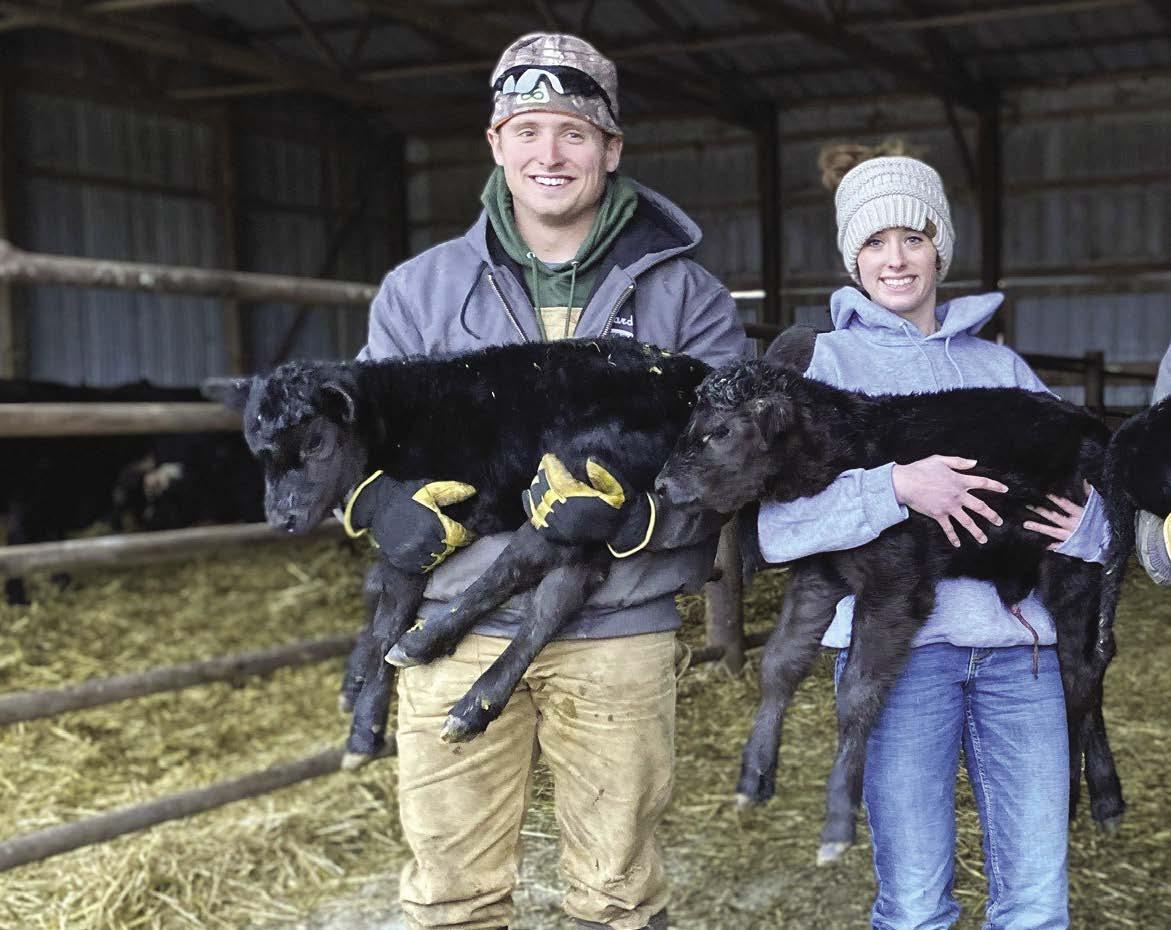
How one family is approaching transitioning the farm
RUSHVILLE, Ill. — Triplets Joseph, Madeline and Ryan Ward have farming in their blood. They are the eighth generation of the Ward family to live and farm in their home county and one of three generations actively farming today at Dusty Farms in Rushville, Ill.
In fact, Joseph and Ryan started early and were still in high school when they bought 10 cow-calf pairs.
“Dad borrowed the money from Compeer Financial, but we paid back the loan, which was $25,000,” Ryan shared. “Joseph and I each paid back half within a year. This was my first taste of making a little money on the farm, and that’s when I really decided this is what I want to do.”
Madeline took a keen interest in the cattle and now owns a share of the 165 cow-calf pairs in addition to working off the farm at a Pioneer agency. All three siblings have found their place on the farm, helping with feeding cattle and taking on unique responsibilities throughout the crop season. Joseph and Ryan do this full time, while Madeline helps on evenings and weekends.
BACK TO THE BEGINNING
But these triplets didn’t make it this far all on their own. Their father, Harold, started farming in 1985 with their grandfather, Jerry. At the time, the family was growing crops on about 1,600 acres and raising pigs.
“We had pigs. The buildings were in need of repair or we needed to build new to expand,” Harold recalled. “Dad asked if I wanted to add buildings or start buying ground. Because I was newly married with kids, I chose to start buying ground.”
Today, the family grows corn, soybeans and wheat on 5,400 acres.
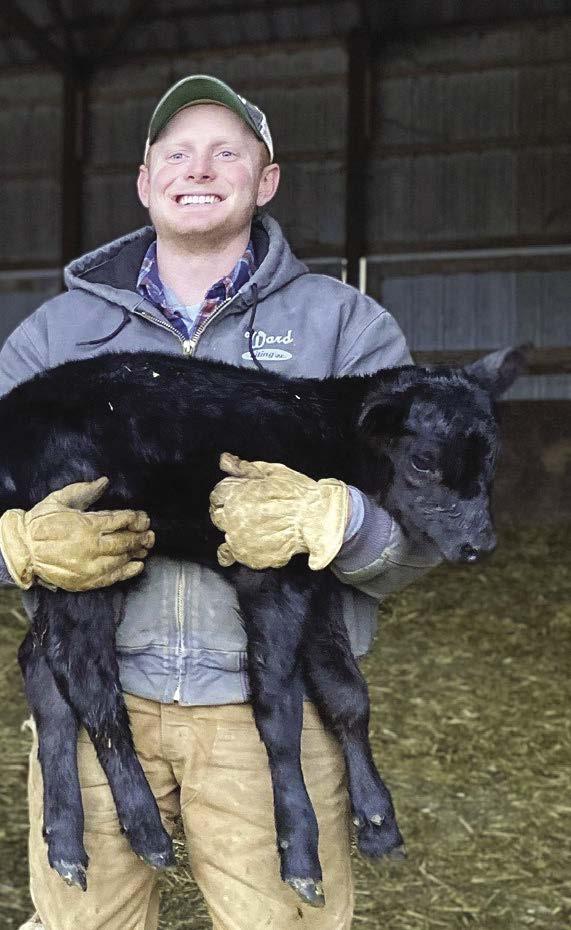
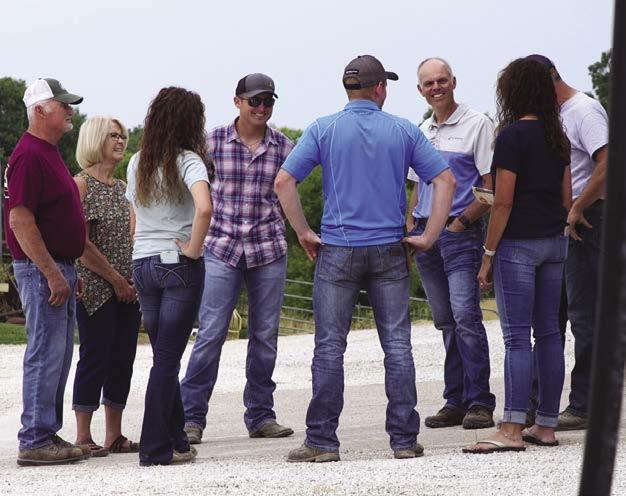
TRANSITION PLANNING
Compeer Financial is committed to helping our clients succeed through every stage of their operation. As your operation changes, we understand the importance of an effective transition plan to safeguard and prepare your operation for future generations. The team at Compeer will be by your side to ensure your planning needs are met.
We have developed a vetted network of highly skilled professionals who offer innovative solutions, a collaborative approach and personalized planning for your farm’s unique needs. You can learn more at compeer.com/ag-financing/ agriculture-business-services/transition-planning.
A TRANSITION PLAN
“Dad and Grandpa have been looking to get us more involved on the business side of the farm,” Ryan said. “A farm recently came up for rent, and Dad talked to us about whether we wanted to rent it on our own, which we did. We ended up working with our Compeer financial officer Robb Creasey to take out a line of credit.”
The family members know the importance of planning because life circumstances can change in the blink of an eye.
“We’re in the process of forming a partnership between the two farms we own,” Harold explained. “We already set up an LLC, so the next step is a partnership. We’re working with a legal professional who can guide us through the process because they are the experts.”
Throughout this process, Joseph and Ryan are continuing to plan for their farm’s future and how they will be involved. “I wouldn’t say we’re going to reinvent the wheel, but we’re looking to grow more on the crop side of the business and maintain the cattle herd,” Joseph shared. “As we look to the future of our farm, we know Robb and the Compeer team will continue to play a vital role in our success.”
Opposite Page: The Ward triplets got involved in the family’s farming operation at an early age, and plan to continue the family’s legacy as they build their own operation while also forming a partnership with their dad and grandpa.
Above: The three generations of the Ward family involved on the farm rely on guidance from each other, the team at Compeer Financial and other experts as they build a plan to transition the operation to the next generation.
ON THE MOVE
Director Dan Erickson’s passion for being involved

ALDEN, Minn. — “Sitting still” is not in Dan Erickson’s vocabulary. A farmer, father, advocate for agriculture, involved community member, volunteer firefighter and a Compeer Financial Board member, Erickson isn’t content unless he’s involved.
“I’m one of those people who can’t sit around,” Erickson noted. “I get antsy.”
Erickson grew up on the dairy farm his parents bought in the early 1970s, just outside of Alden in southern Minnesota. After earning a degree from South Dakota State University, getting married and working a few off-farm jobs, Erickson came back to work his own farming operation and help his father.
“Dad sold off the dairy portion of his farm right before I came back. I rented my first piece of land in 2000 and started custom raising dairy heifers,” Erickson explained. “Our transition planning started right when I began farming. Our financial officer at Compeer was instrumental in helping us work through the transition to figure out the loan structure and plan carefully. As my parents started slowing down, I kept pushing forward to rent and buy more to get us to where we are now.”
Today, Erickson Family Farms includes 1,300 acres of corn, soybeans and alfalfa and custom raises 350 dairy heifers. Together with his wife, Jenny, who is a special education teacher, they have three children — Grace (19), Tyler (16) and Karina (13).
A love of farming is already clear in the next generation. The teens regularly pitch in to help on the farm and show animals for 4-H and FFA at many shows during the summer.
BUILDING A COMMUNITY OF PEERS
Erickson relies on the expertise of many people connected to his operation, including his financial officer, attorney, CPA, and seed and chemical reps. He also turns to a group of peers for advice and ideas.
“Our peer network started with about four buddies, roughly the same age, who also farm,” Erickson said. “We’d casually get together and naturally talk about all things farming. So we decided to formalize it, and today, the peer group includes seven farms of all sizes within a 100-mile radius.”
And because they’ve built a community of trust, the group can talk openly about many things.
“We talk candidly about our financials and our cost of production — but we trust the people we’re with,” Erickson explained. “The things I’ve picked up from this group have been invaluable. We bounce ideas off each other and learn from each other. We all do little trials in our cropping operations, and I’ve actually changed some of my practices because of what I’ve learned from others — like sidedressing a lot of my nitrogen later in the season and adding a late-season fungicide, which I never used to do.”
Erickson said they’ve formalized their meetings, getting together about three times a year with an agenda. They even bring in speakers to talk with the group.
SERVING ON COMPEER’S BOARD
It was talk in the peer group that ultimately led Erickson to run for Compeer’s Board of Directors in 2018. One day, the group realized they had a lot of stake in Compeer as borrowers, but no one had further involvement in the cooperative.
“The idea to run for Compeer’s Board of Directors was born as a result of that discussion,” Erickson reflected. “My passion for agriculture, paired with the enjoyment I have for figuring out finances, was a good fit with Compeer. I treat my role on the Board as a job, and I never lose sight of my role in serving our member-owners.”
While planning for the future of the cooperative as a Board member, Erickson also looks forward to the future of his operation.
“I was fortunate to have parents willing to work through a transition plan,” he said. “With my kids on the farm, the next generation is already putting in hard work, and with any luck, I hope we can continue the legacy.”
Opposite Page: Dan Erickson serves as a Director on Compeer’s Board, bringing his passion for agriculture and serving others together for the benefit of Compeer’s member-owners.
Below: Erickson Family Farms custom raises dairy heifers and has 1,300 acres of corn, soybeans and alfalfa.
